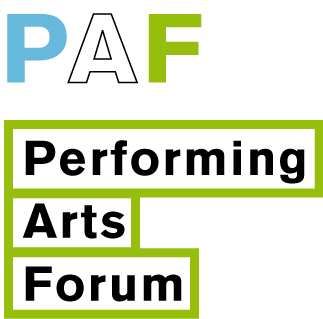
Central America Now
Submitted by Textoblanco on Wed, 2007-03-28 21:39
Central America Now: Urban cities maps in the contemporary artistic practices cartography
By Bayardo Blandino
Summary essay
The presentation of Central America NOW video within a recent exhibition, has served me to investigate how the english term “NOW “can get to affect us by making us have a vague idea of our present in our minds, a sense of surprise of the recent and daily events, of what precedes us and real time events, taking into account, that our countries coexist in a daily basis with an english language over-exposure.
The present Central American here and now is redraw cartography. We live in time spaces which constantly loose their sociocultural borders – one of the effects the more complex to explain. Nevertheless, a network exists, a macroeconomic synchrony that is determining the new conceptual rolls in our cities life. The effects of a “delayed capitalism”, as most thinkers describe us, societies that continue to be characterized as being early enrolled in the global economies, such as the free-trade agreement treaty, the interregional development strategies, the block markets, that takes us to assume a context with constituted economic, social and military complex networks .
These circumstances forces us to rethink our region as one that has put into circulation artistic speeches which historically have been reduced and “have” been linked between the national and regional, excluding them from the international circuitry. From this optics the city, and properly speaking, the central cartography – the periphery of our region – has extended as a meditative platform. This constant responds to the attainment of new interrelation conducts between artists and institutions, as well as them being key actors in the attainment of artistic projects, which locate specifically in the public sphere space, as “transits” – term understood as a vast connections system into which the artistic speeches have the tendency to lay way to the urban dynamics of the central american capitals.
The insertion of glances, towards multiplicity and urban images has contributed to exert a new canon, an inter-connectivity between the circumstances that determine the future of the economic, social and cultural Latin-American context. The Central American cities are rethinked beyond the intrinsic phenomena of their cultural policies.
At the present time, the urban artistic practices in today’s’ Central American context transfer the national scenario constituted by this means as the zoom-zone, in which an extensive significants network is exposed in connection with the artistic events within the political and social life. This phenomenon has been constituted in the base of new explorations which consequently put into relief the expansion of new narratives and the rupture with the dominant marginalizing social effects of the culture of these six Central American countries.
In order to speak in terms of the recent (the NOW), in the reading of the contemporary artistic practices, from a region in transit, is essential to mention the process which during last the ten years, has gained visibility of our new imaginary. At this point, I would argue about a route in a layout of three axes: "The private and the public domain in the contemporary map interventions plane", as being an approach of this artistic practices as they are inspired by the international art scenery and begin to play a role in our own context. "Connected Situations of the relational art in the city", a reading of the narrowed margin maintained by the artists personal companies by means of the artistic remuneration, in the location of a new critics phase. "The city as scenario and its joints with the context art" a route by the juxtapositions of the objects practices with the stage scene public space.
It is within this multiple Central American cartography – space of dispute between tradition and the new parameters – in which the ideas and the concepts operate today. It is necessary to make a redefinition of the artistic practices and an haste arises, as cited by Sebastian Lopez , also [...] "the new networks that we will find will be countless and they will allow us, in each contact point, a plethora of new lessons that will allow us to face the "contemporaneous" as opened to whatever concerns us" [...]
References and notes
Art video, Central America Now, 2004, 7´
Through a projection it appears to us the reality of a country anti-development, anti-honesty, anti-education and anti-progress. It could be any country of Latin America or Third World Country. In the video they will appear images that have been taken from the main situations of social pressure on groups of young people organized in the gangs in Honduras. The video is a documentary approach but also it is a work created from animated and artistic characters that it tries to approximate through the image a reflection to near the social rolls of a our countries before the devastating crisis of immigrations, unemployment, vandalism, among other existing situations of social vulnerability. Aguilar Regina, Art statement, 2004.
[...], the delayed capitalism arrived to Central America after long periods of political and economic misery, objectual in essence, of massive consumption, forms and relations, meanings and forms that are collapsing – previous firm forms as well as firm understood references [...] Territories in transit within the contemporary plastic arts in Honduras, Lopez Sebastian, Visual Arts Biennial of Honduras catalogue, 2006. Page 20 Ob. cit., p.17 Territories in transit within the contemporary plastic arts in Honduras, Lopez Sebastian, Visual Arts Biennial of Honduras catalogue, 2006. Pág.20
Ciudad MULTIPLE City, Panamá, Panamá City, 2003. All Including Urban Images of Central America. San Jose, Costa Rica. 2004. Joints, Managua, Nicaragua, 2004. Projects and exhibitions of urban art of regional and international character in the cities Central America and developed by foundations and private non-profit instances like ARPA, Contemporary Art Foundation of Panama, Foundation Arts Teor/ética, Espira/ ESPORA.
Sebastián López, Artistic Director of Daros-Latinamerica - Río de Janeiro, Brazil. International Jury of the 1st Visual Arts Biennial of Honduras, 2006
editions©® textoblanco 2007
Profile
Bayardo Blandino was born in Nicaragua in 1969, lives and works in Tegucigalpa, Honduras, C. A. Artist and curator; Co-founder director of the CAVC/ MUA Contemporary Visual Arts Center of Women in Arts; Founded in association with MUA- Women in the Arts, a non-profit cultural organization seated in Tegucigalpa, Honduras in 1995.


